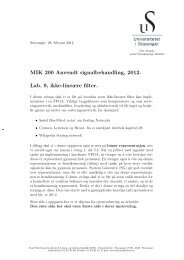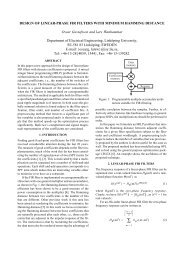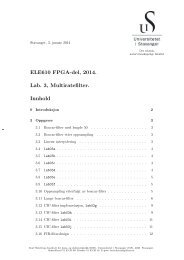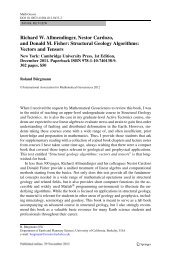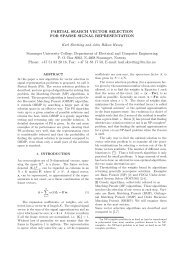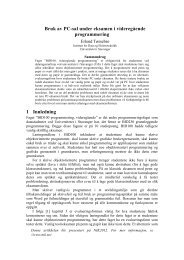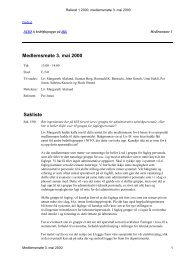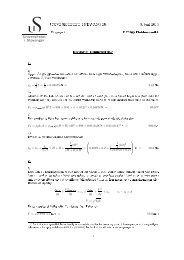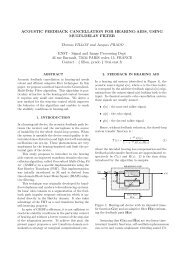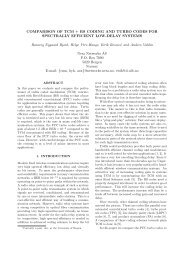Lecture Notes Course à MA 190 Numerical Mathematics, First ...
Lecture Notes Course à MA 190 Numerical Mathematics, First ...
Lecture Notes Course à MA 190 Numerical Mathematics, First ...
You also want an ePaper? Increase the reach of your titles
YUMPU automatically turns print PDFs into web optimized ePapers that Google loves.
Subtracting the last relation from the preceding one we getd(¯c) − d(c) = b T (¯x − x) = (A T y) T (¯x − x) = y T A(¯x − x) = y T (¯c − c) = y T ɛ.•Thus we may estimate the change in the value of the functional d(c) caused bya perturbation of c without studying the inverse of A.1.5.2 Error analysis for linear systems of equationsIn many practical situations the numerical treatment of a linear system of equationsgives an approximate solution vector which is far from the exact solution,but the residual is small. However, we do not seek the solution vector itself,but need to enter it into some formula to obtain the end result. If we need toevaluate a linear functional to find the desired result, we may use the theoremabove to estimate the error in our final result which may be much smaller thanthe error in the calculated solution vector. We note that we may estimate theerror in component x i by putting b = (0, 0, . . . , 1, 0, . . . , 0) T , i.e. by puttingthe i-th component equal to 1 and all the others to 0. It is worth mentioningthat these error bounds are obtained without estimating the norm of the inverseof the square matrix A. However, if we need to estimate the errors in allthe components of the calculated solution vector, then we need to perform acomputational effort equivalent to inverting A.1.6 Some standard definitions and results1.6.1 Order of magnitude O and oDefinition 1.6.1 We write thatf(x) = O(g(x)), x → ∞ whenExample: f(x) = x 3 + 5, g(x) = x 3andExample: f(x) = x 2 , g(x) = e xSimilarlyf(x) = o(g(x)), x → ∞ whenf(x)limx→∞ g(x) = c ≠ 0,f(x)limx→∞ g(x) = 0.f(x) = O(g(x)), x → 0 when limx→0f(x)g(x) = c ≠ 0.Example: f(x) = sin x, g(x) = xandf(x)f(x) = o(g(x)), x → 0 when limx→0 g(x) = 0.Example: f(x) = 1 − cos x, g(x) = x12



